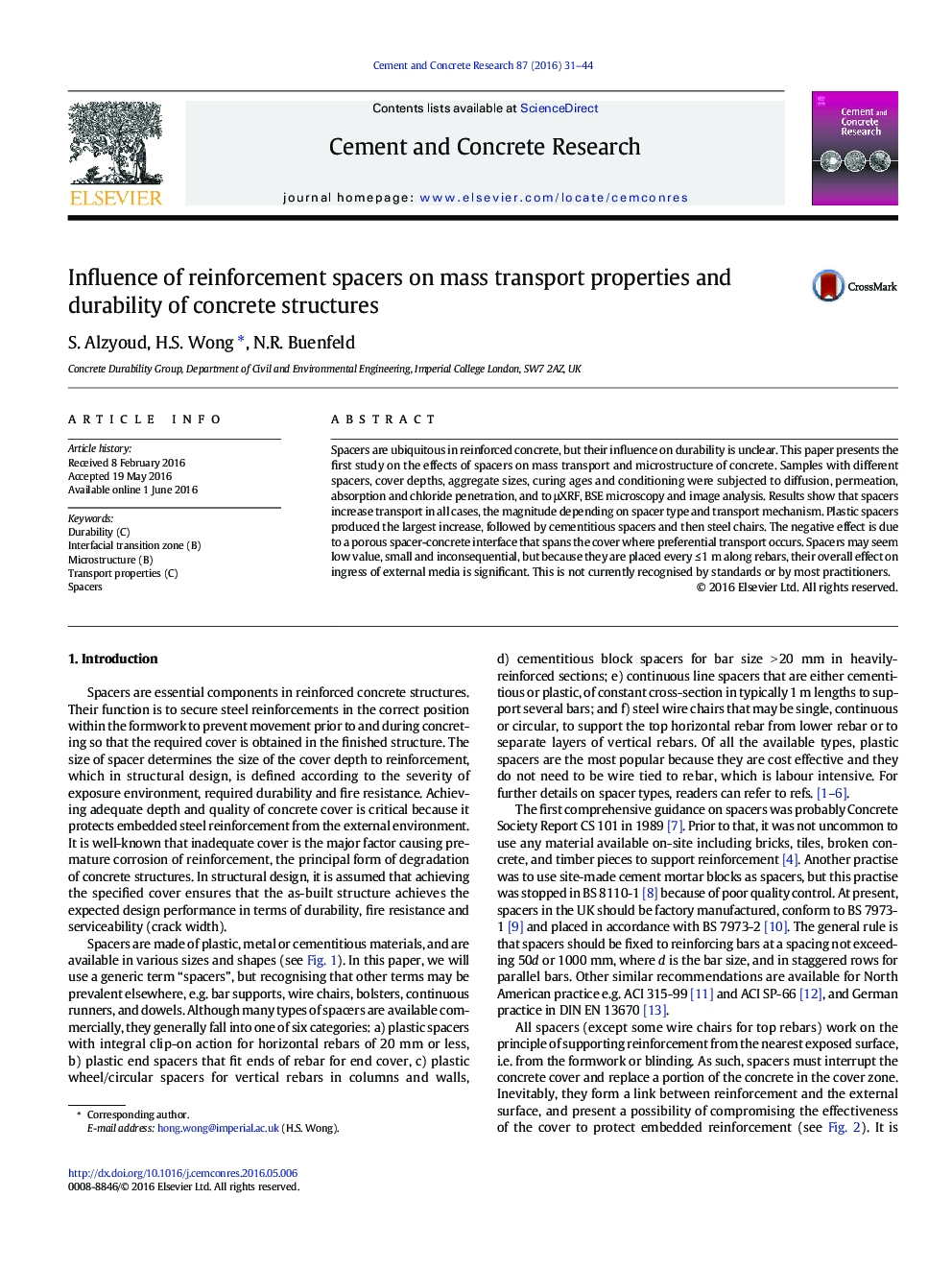| Article ID | Journal | Published Year | Pages | File Type |
|---|---|---|---|---|
| 1455962 | Cement and Concrete Research | 2016 | 14 Pages |
Spacers are ubiquitous in reinforced concrete, but their influence on durability is unclear. This paper presents the first study on the effects of spacers on mass transport and microstructure of concrete. Samples with different spacers, cover depths, aggregate sizes, curing ages and conditioning were subjected to diffusion, permeation, absorption and chloride penetration, and to μXRF, BSE microscopy and image analysis. Results show that spacers increase transport in all cases, the magnitude depending on spacer type and transport mechanism. Plastic spacers produced the largest increase, followed by cementitious spacers and then steel chairs. The negative effect is due to a porous spacer-concrete interface that spans the cover where preferential transport occurs. Spacers may seem low value, small and inconsequential, but because they are placed every ≤ 1 m along rebars, their overall effect on ingress of external media is significant. This is not currently recognised by standards or by most practitioners.
